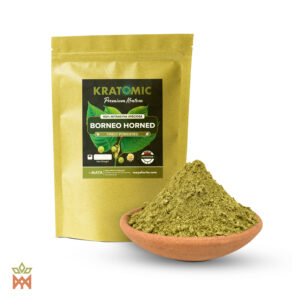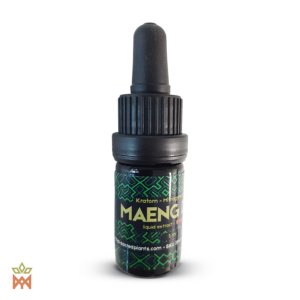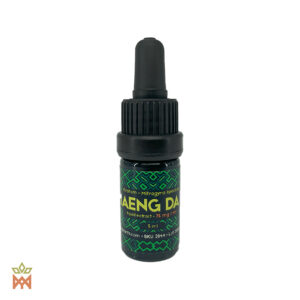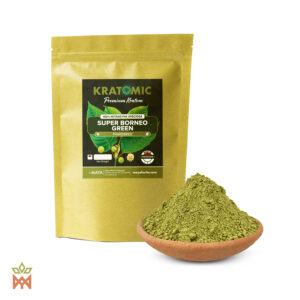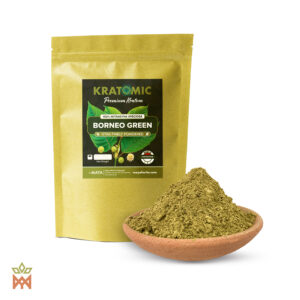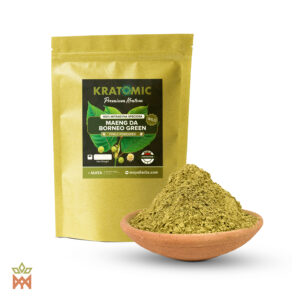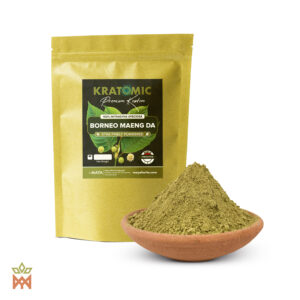Showing all 7 results
- Price range: € 8,90 through € 114,00 Incl. VATSelect options This product has multiple variants. The options may be chosen on the product page
- Price range: € 8,75 through € 112,00 Incl. VATSelect options This product has multiple variants. The options may be chosen on the product page
- Price range: € 8,00 through € 115,00 Incl. VATSelect options This product has multiple variants. The options may be chosen on the product page
- Price range: € 9,15 through € 117,00 Incl. VATSelect options This product has multiple variants. The options may be chosen on the product page
- Price range: € 9,95 through € 129,50 Incl. VATSelect options This product has multiple variants. The options may be chosen on the product page
Showing all 7 results
Green Kratom: An Insight into the Tropical Botanical
Green Kratom, scientifically recognized as Mitragyna speciosa, is a tropical evergreen tree belonging to the coffee family, Rubiaceae. This tree is native to Southeast Asia, thriving in the humid environments of Thailand, Indonesia, Malaysia, and surrounding countries. The name "Green Kratom" derives from the vivid green veins that run through its leaves, distinguishing it visually and functionally from other strains like Red and White Kratom.
Botanical Characteristics and Compounds
Green Kratom is harvested from mature leaves that contain a rich profile of bioactive compounds. The most notable of these are the alkaloids mitragynine and 7-hydroxymitragynine. These compounds are present in varying concentrations across different strains of Kratom, influencing their characteristics. In Green Kratom, these alkaloids exist in a balance that is believed to contribute to the plant’s unique properties. The leaves are typically harvested in a meticulous process that ensures the veins remain intact, preserving the natural efficacy of the alkaloids.
Historical Background
Historically, Kratom has been used in Southeast Asia for centuries. Farmers and local workers originally chewed the leaves to benefit from their natural properties during long, demanding workdays in the fields. Over time, the use of Kratom spread, gaining popularity as knowledge of its properties grew. Traditional methods of consumption included chewing raw leaves, brewing them into tea, or drying and powdering them for later use.
Distinctive Features Compared to Other Kratom Varieties
Green Kratom stands distinct from Red and White Kratom primarily due to its balanced alkaloid profile. While Red Kratom is often associated with more calming properties and White Kratom with more stimulating properties, Green Kratom offers a moderate balance between these effects. This characteristic makes Green Kratom particularly versatile, catering to a broader spectrum of preferences.
The differences among the strains are also influenced by the specific regions in which they are grown, the age of the leaves at the time of harvest, and the methods used in drying and processing the leaves. These factors can affect the concentration and balance of alkaloids in the leaves, contributing to the unique attributes of each strain.
In summary, Green Kratom is a complex and historically rich botanical known for its distinctive green-veined leaves and a balanced composition of alkaloids. Its cultivation and use are deeply rooted in the traditions of Southeast Asia, reflecting a long history of interaction between the natural environment and local cultural practices. As a member of the diverse Kratom family, Green Kratom continues to be valued for its unique place within the spectrum of Kratom varieties.
Purchasing and Quality Considerations
When looking to buy Green Kratom, it's important to source from reputable suppliers to ensure product purity and quality. High-quality Green Kratom should be vibrant in color and have a fine, consistent texture. It's advisable to start with a lower dose to gauge sensitivity and response, as the potency can vary significantly depending on the source and processing.
Green Kratom offers a unique balance of stimulating and soothing properties, making it a favored choice among Kratom enthusiasts. Whether you are seeking to boost your focus for work, enhance your social engagements, or simply support your overall mood and well-being, Green Kratom presents a natural and versatile option to consider.


